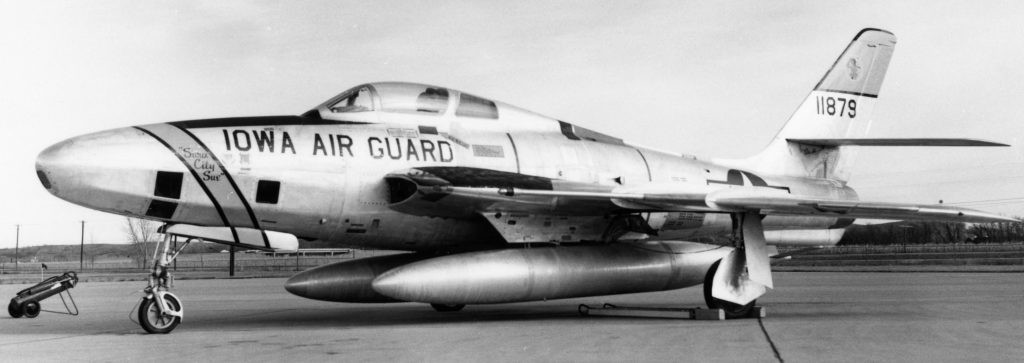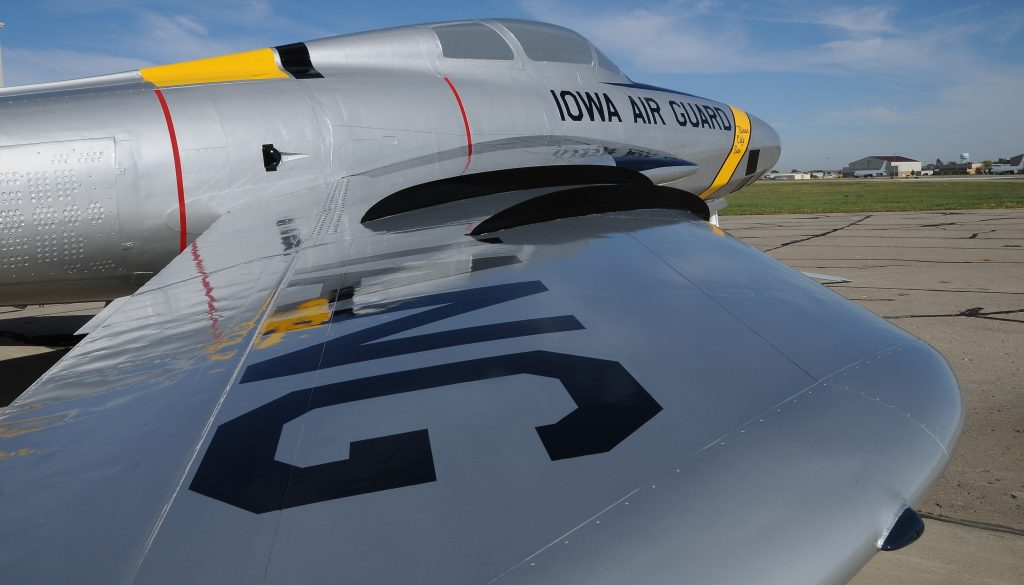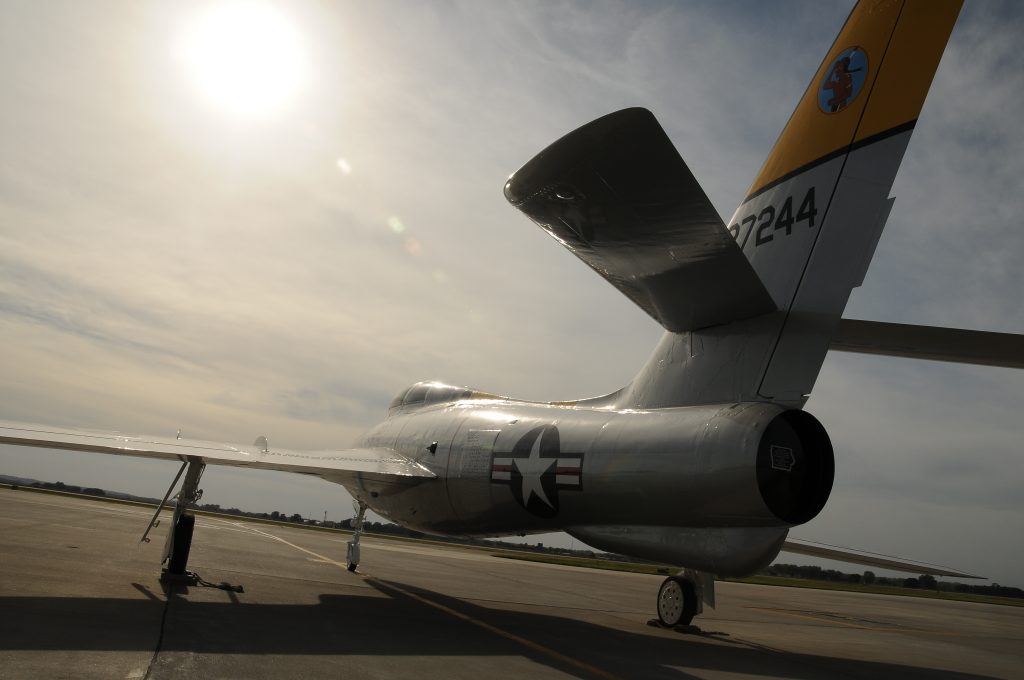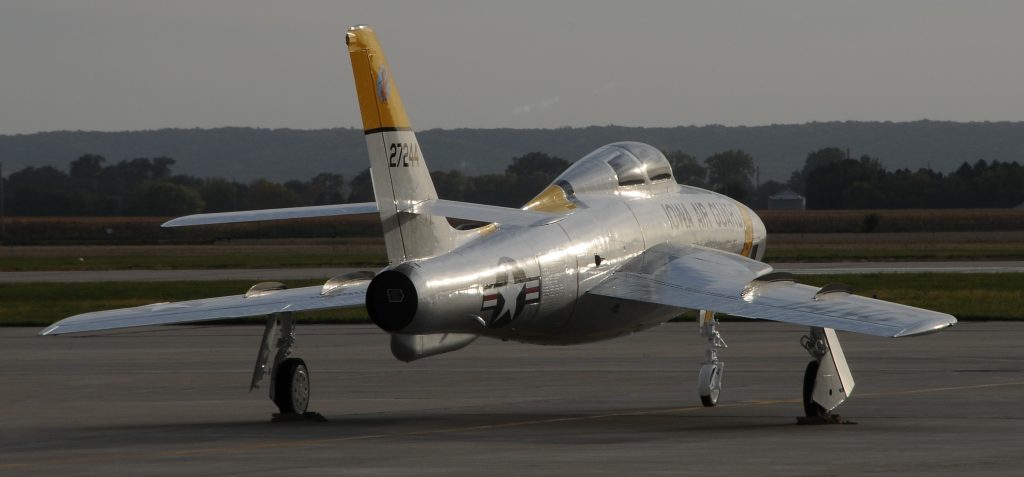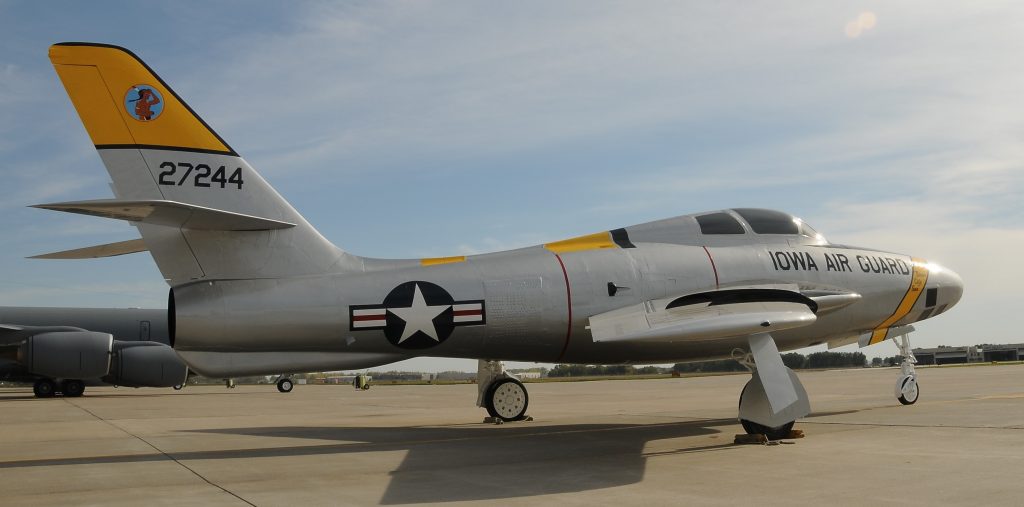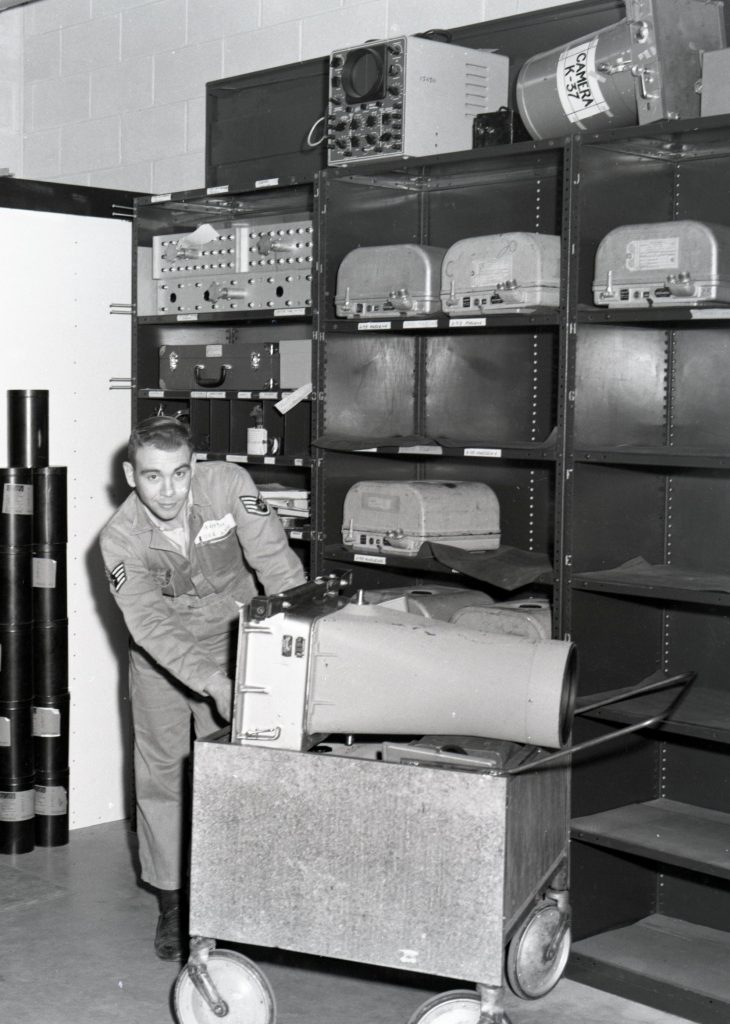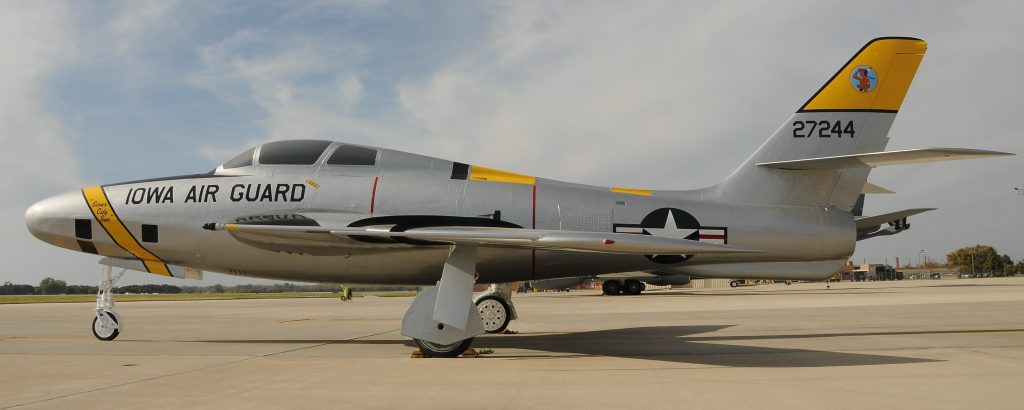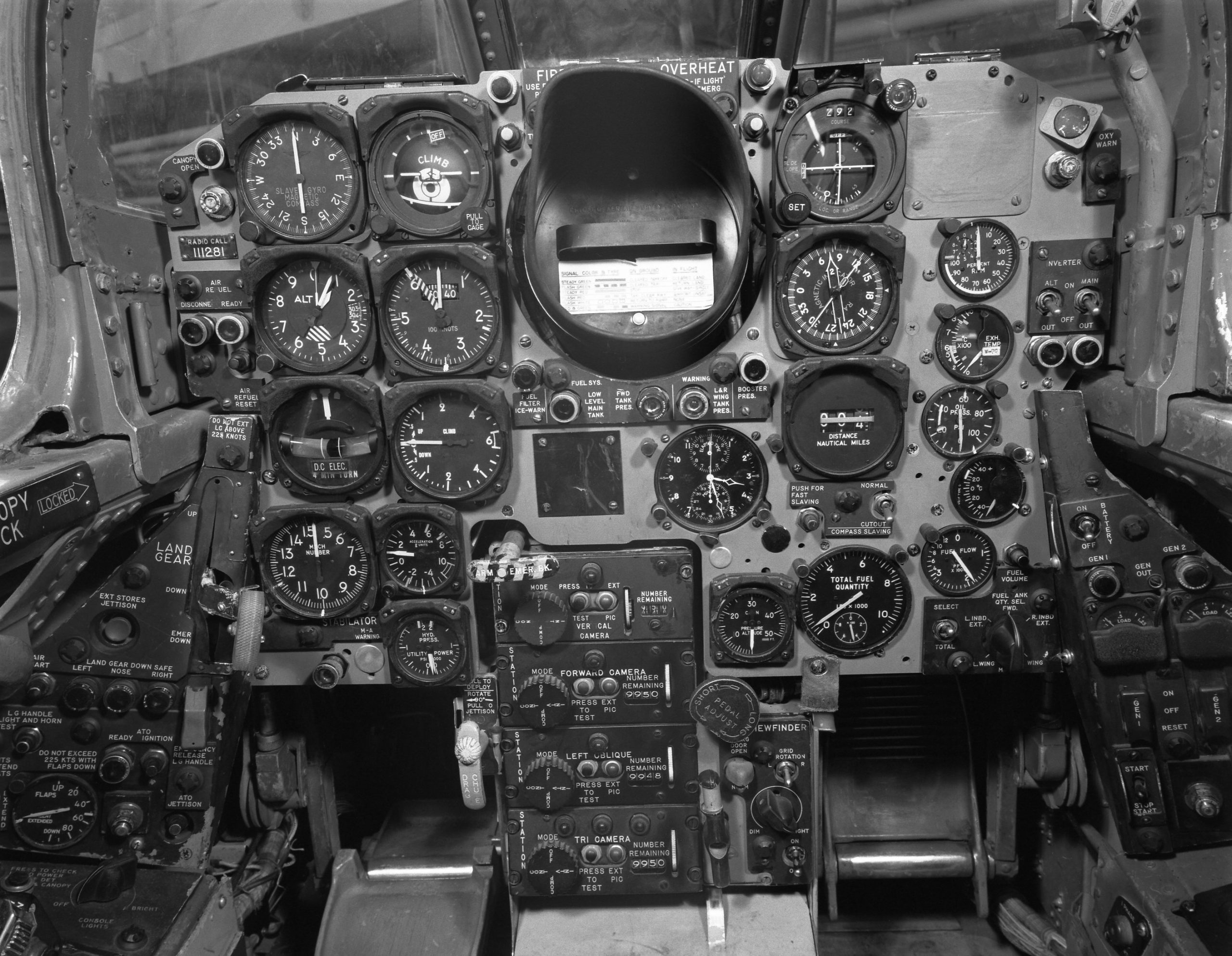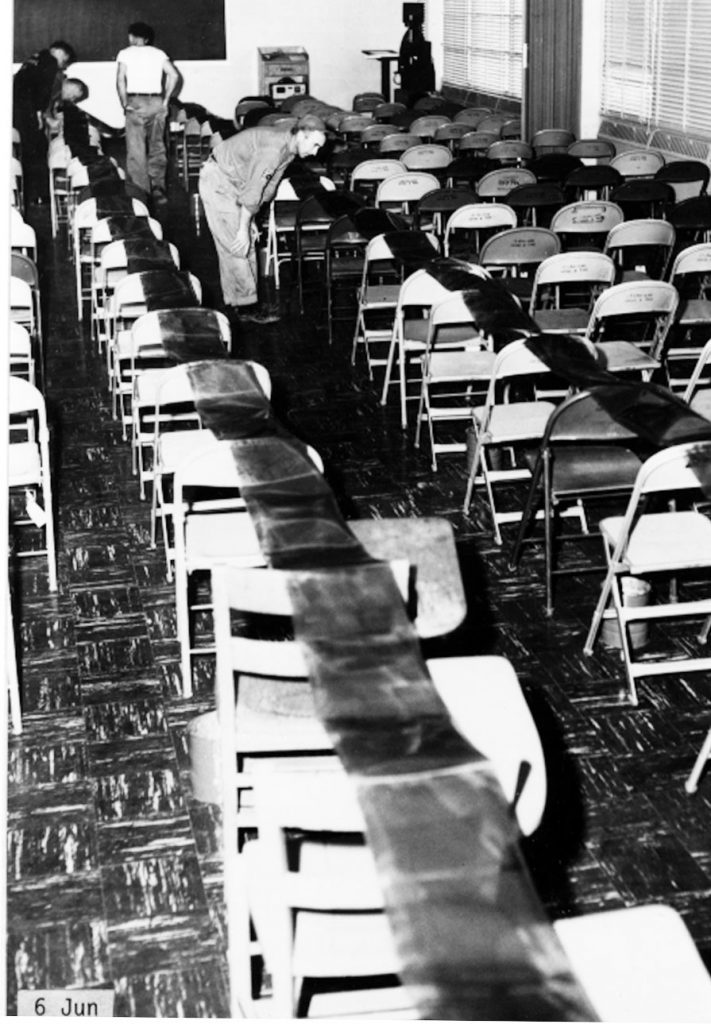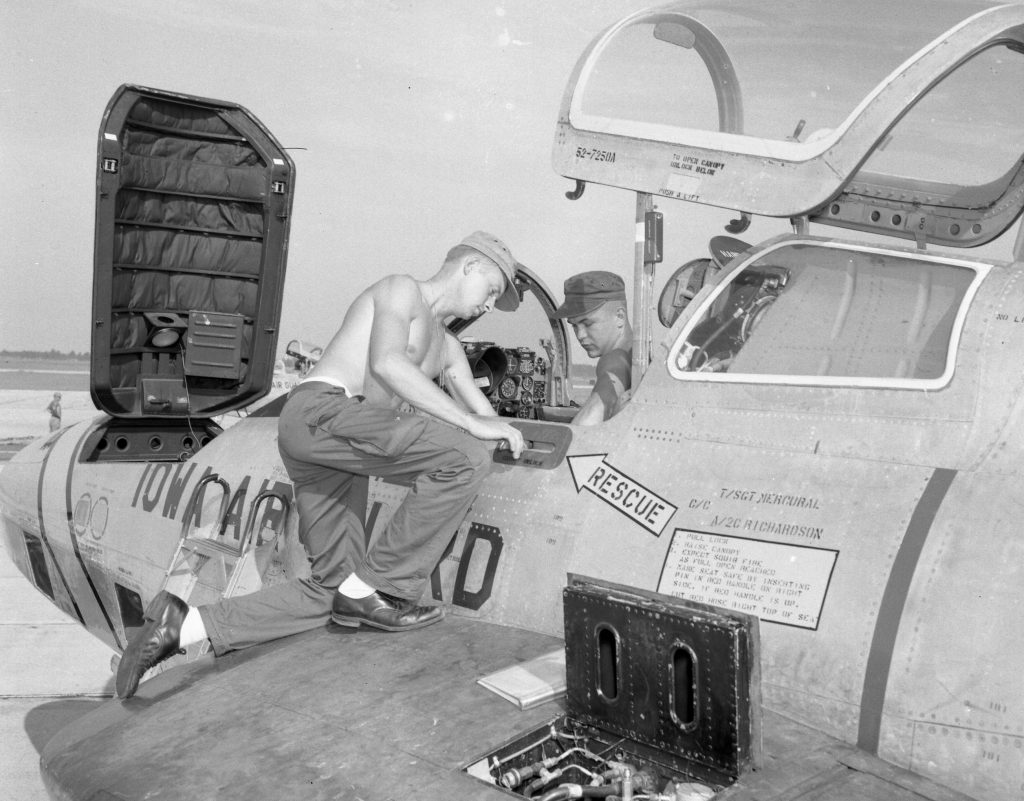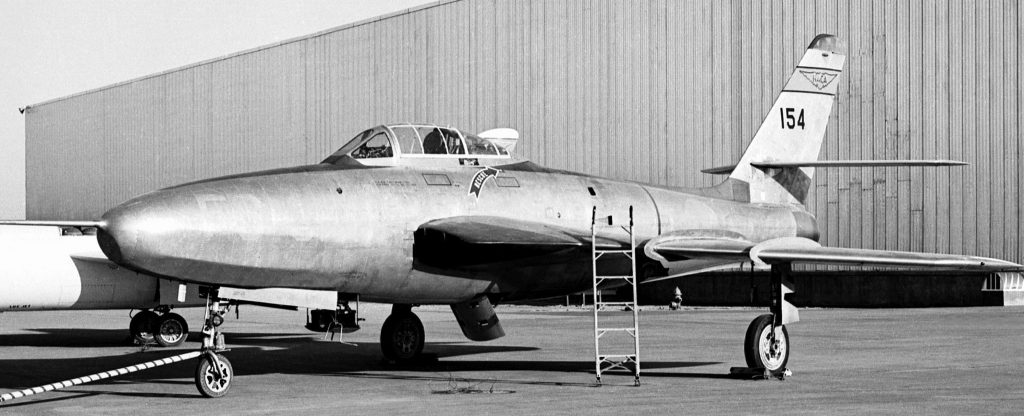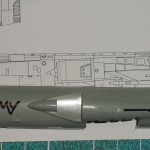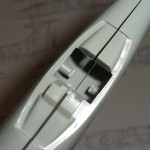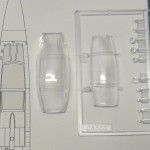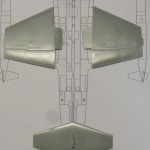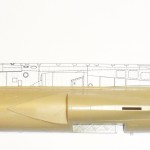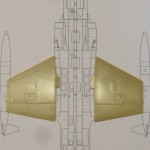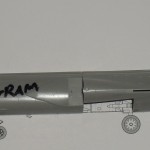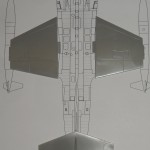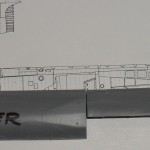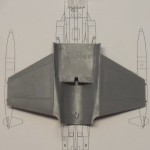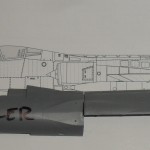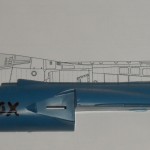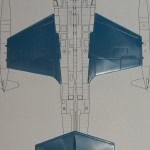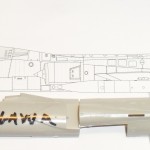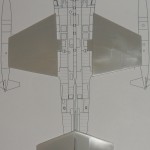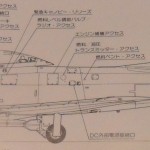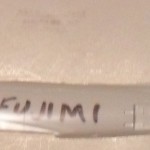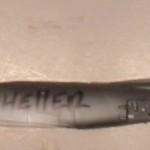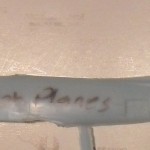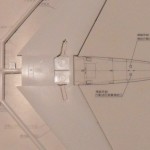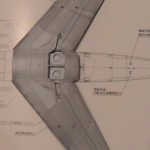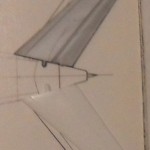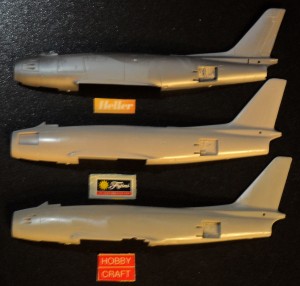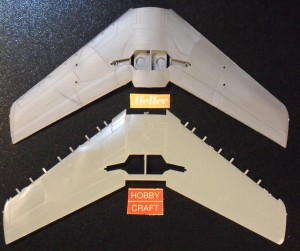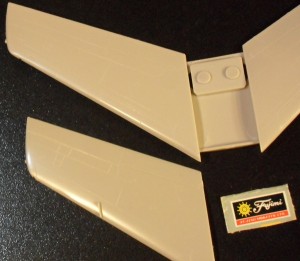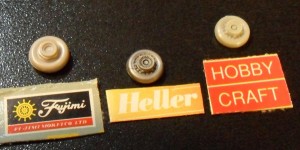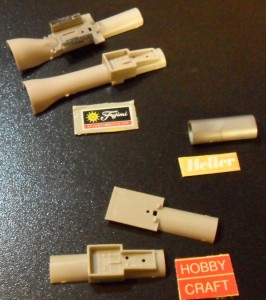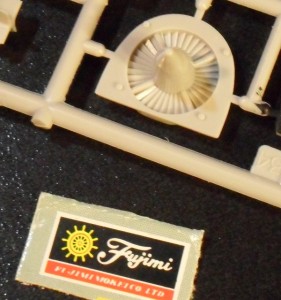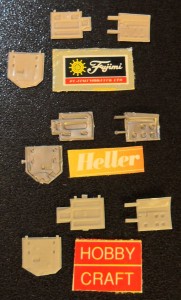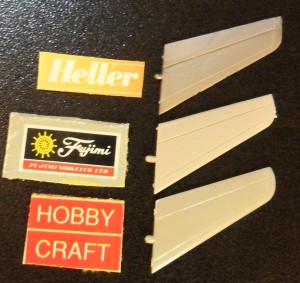174th Tactical Reconnaissance Squadron, Iowa Air Guard, Sioux City Sue RF-84F, photo taken in 1960, aircraft retired 1961.
Sioux City Sue, 2013
The secret hi-tech for 1960s aerial-recon; big lens, big negatives. The RF-84F also used a three camera system called Tri-Metrogon, to take horizon-to-horizon photos.
Official video report about the history of the RF-84 and the restoration of Iowa Air Guard gate guard Sioux City Sue:
The large ‘screen’ at top center of the instrument panel is not for radar, it’s the pilot’s aiming view-port for the camera.
Before the unit got the proper equipment for developing the massive negatives, they had to drape them over chairs to dry them.
And now for something different, how about the YRF-84F? 51-1828 — NACA tail number 154. Only one built. NACA High-Speed Flight Research Station used the aircraft from 1954 until 1955.
Model Kit Round-Up: 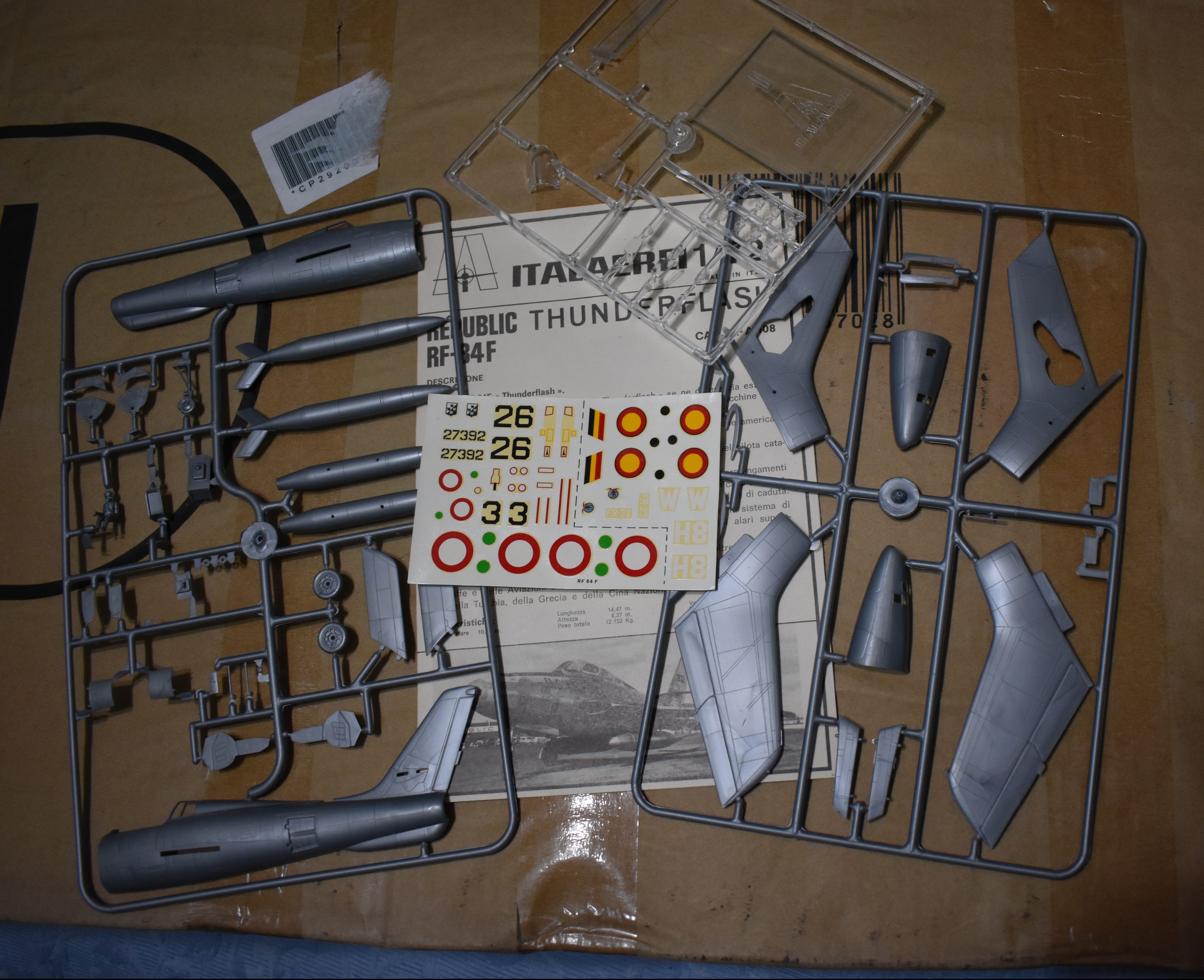 Italeri’s RF-84F was the first in 1:72 scale, first released in 1974 (according to ScaleMates). It’s also been issued by Revell-Germany and Testors. It’s a modification of their F-84F kit. It’s very basic, no interior details, surface details are raised. Reviewers say it has shape problems. With patient searching it can be had as a pre-owned kit for as little as five bucks (not including shipping), yet for some reason most internet sellers expect at least $20 and as much as $40 (outrageous).
Italeri’s RF-84F was the first in 1:72 scale, first released in 1974 (according to ScaleMates). It’s also been issued by Revell-Germany and Testors. It’s a modification of their F-84F kit. It’s very basic, no interior details, surface details are raised. Reviewers say it has shape problems. With patient searching it can be had as a pre-owned kit for as little as five bucks (not including shipping), yet for some reason most internet sellers expect at least $20 and as much as $40 (outrageous).
 Another RF-84F in 1:72 scale is the PJ Production multi-media kit, in resin, PE, metal and vacform plastic. It is highly accurate and detailed. Reviewers report it is not for beginners and requires a lot of dry fitting to reveal the difficult areas of assembly. The kit has been around for at least a decade, yet PJ Production website still lists it as a “new product”. It lists for 41.50 Euros (about $50 to $60 USD depending on the exchange rate).
Another RF-84F in 1:72 scale is the PJ Production multi-media kit, in resin, PE, metal and vacform plastic. It is highly accurate and detailed. Reviewers report it is not for beginners and requires a lot of dry fitting to reveal the difficult areas of assembly. The kit has been around for at least a decade, yet PJ Production website still lists it as a “new product”. It lists for 41.50 Euros (about $50 to $60 USD depending on the exchange rate).
PJ PRODUCTION HAS NEW STUFF FOR 2014!
 Almost forgot that in 2018 Sword issued their RF-84F. The quality of the parts is typical of Sword kits. Issued in two boxings with four different markings per box. Initial reviews are good. In the United States the price ranges from $20 to $32, and they’re selling fast.
Almost forgot that in 2018 Sword issued their RF-84F. The quality of the parts is typical of Sword kits. Issued in two boxings with four different markings per box. Initial reviews are good. In the United States the price ranges from $20 to $32, and they’re selling fast.
 For decades the only 1:48 scale RF-84F was the not so good Heller kit. Apparently first released in 1979-80 along with its F-84F Thunderstreak. About four years later Monogram released its way better F-84F, but for some reason decided not to do a much needed RF version. The Heller kit is as basic as the 1:72 scale Italeri kit, it’s been re-issued continuously and the U.S. price for previously owned kits averages $20, while the latest new issues are going for as much as $40 (outrageous given its age and lack of quality).
For decades the only 1:48 scale RF-84F was the not so good Heller kit. Apparently first released in 1979-80 along with its F-84F Thunderstreak. About four years later Monogram released its way better F-84F, but for some reason decided not to do a much needed RF version. The Heller kit is as basic as the 1:72 scale Italeri kit, it’s been re-issued continuously and the U.S. price for previously owned kits averages $20, while the latest new issues are going for as much as $40 (outrageous given its age and lack of quality).
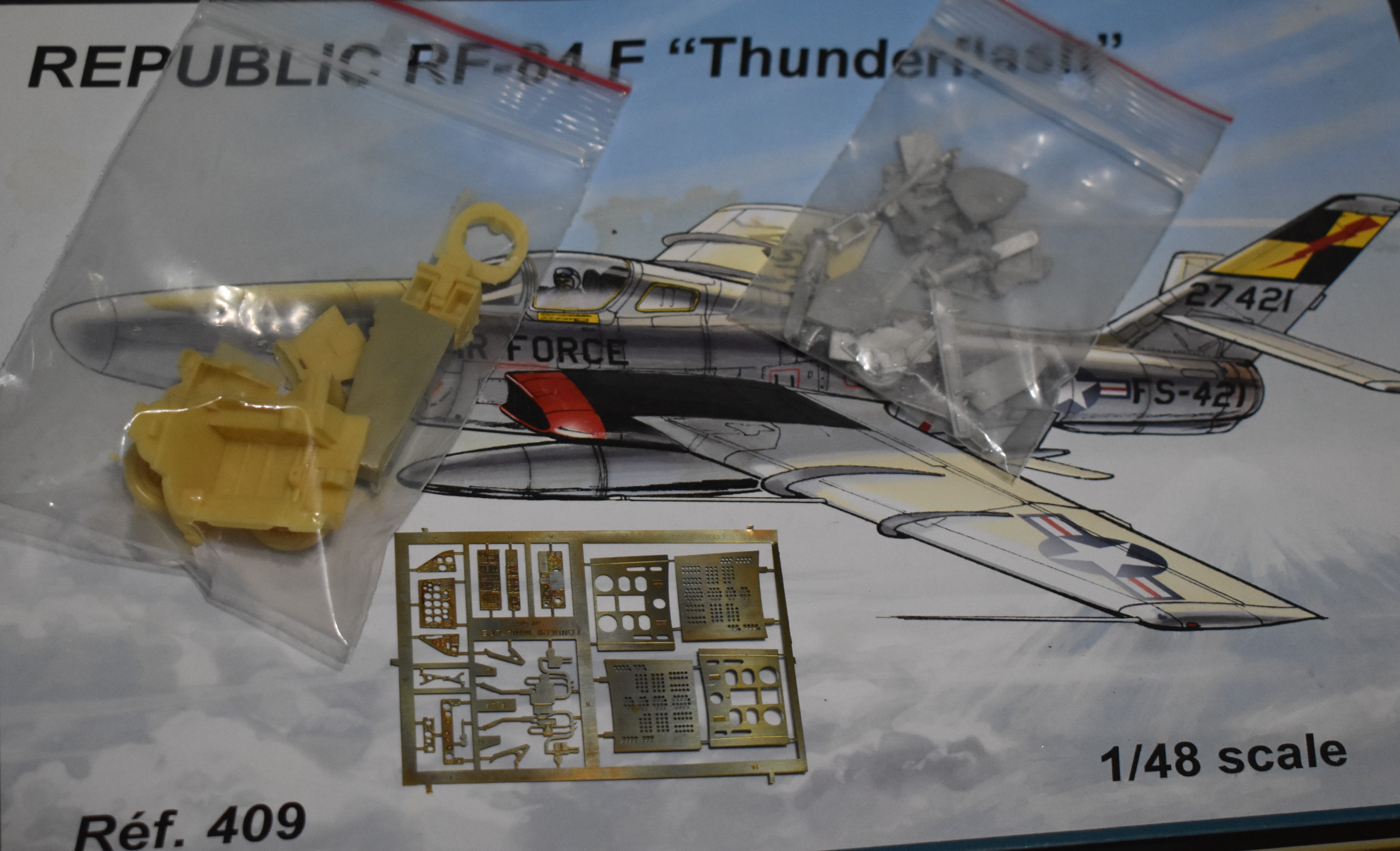 About 15 to 20 years ago Foundier Miniature (FM) tried to improve the Heller kit by adding resin parts for the cockpit, metal parts for the landing gears, and PE parts for things like the speed brakes/spoilers. It was issued under their Xkit label. Beware, the kit I bought (second hand) has massive warp-age of the Heller parts.
About 15 to 20 years ago Foundier Miniature (FM) tried to improve the Heller kit by adding resin parts for the cockpit, metal parts for the landing gears, and PE parts for things like the speed brakes/spoilers. It was issued under their Xkit label. Beware, the kit I bought (second hand) has massive warp-age of the Heller parts.
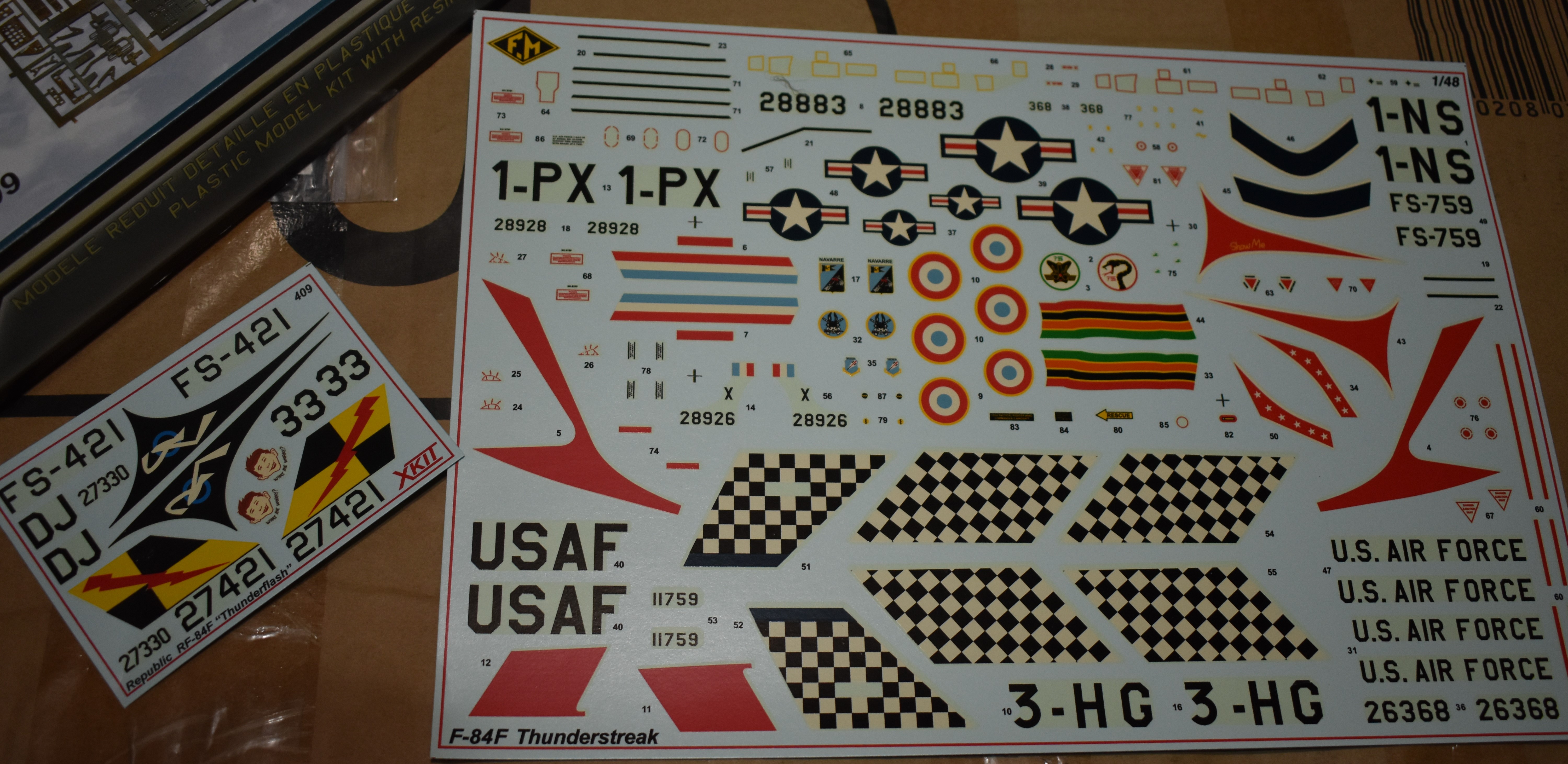 It also has a massive decal sheet marked F-84F, and a tiny sheet marked RF-84F. The large sheet is from FM’s F-84F issue, but you’re meant to use the national insignia on that sheet for the RF-84F. The instructions are modified Heller instructions with additions to show the usage of the FM detail parts.
It also has a massive decal sheet marked F-84F, and a tiny sheet marked RF-84F. The large sheet is from FM’s F-84F issue, but you’re meant to use the national insignia on that sheet for the RF-84F. The instructions are modified Heller instructions with additions to show the usage of the FM detail parts.
 And now for something really outrageous. Recently a Japanese company called Tanmodel issued the newest 1:48 scale RF-84F. You’d think it was the best damn thing in the world going by how much sellers are asking for it. An internet review said it was better than the ancient Heller kit, but the recessed surface detailing is not much better than Monogram’s raised detailing. In fact the reviewer said the recessed rivets (which there are no such thing on real airplanes) look more like 1:32 scale rivets, the pics of the completed kit makes it look like the trench-n-divet surface details are raised because they’re so over-scale. You get air intake ducting and an exhaust pipe. You also get a detailed camera bay, which is pointless because the fuselage is not molded so that you can poise the access door in the open position (you could do surgery). The ultimate reason this kit is so outrageous is its asking price, I’ve seen prices ranging between $70 and $180!!!
And now for something really outrageous. Recently a Japanese company called Tanmodel issued the newest 1:48 scale RF-84F. You’d think it was the best damn thing in the world going by how much sellers are asking for it. An internet review said it was better than the ancient Heller kit, but the recessed surface detailing is not much better than Monogram’s raised detailing. In fact the reviewer said the recessed rivets (which there are no such thing on real airplanes) look more like 1:32 scale rivets, the pics of the completed kit makes it look like the trench-n-divet surface details are raised because they’re so over-scale. You get air intake ducting and an exhaust pipe. You also get a detailed camera bay, which is pointless because the fuselage is not molded so that you can poise the access door in the open position (you could do surgery). The ultimate reason this kit is so outrageous is its asking price, I’ve seen prices ranging between $70 and $180!!!
In 1:32 scale there was the I.D. Models vac-formed kit, released in the 1990s. It was basic, no detailing, only the main fuselage and wings, canopy, external tanks, nothing else. Starting in 2014 there were rumors that Kitty Hawk was going to issue a 1:32 RF-84F. The rumors got a lot of people excited, so far nothing has materialized.
Everybody needs to contact the neue Eigentümer der Monogram and demand they make a 1:48 scale RF-84F!
For now (meaning whenever I get a round to it) I’m going to attempt to mate the nose and main wings of my warped Heller-FM RF-84F to one of the many Monogram F-84Fs in my stash. (somebody attempted it using a Kinetic/Italeri kit)
Vehicle I-D: TIME TO SEE THE ‘DOC’ (B-29)
RETIRED USN CRAFTSMAN RECALLS DAYS OF BEING PAID TO BUILD GIANT MODEL PLANES!
SUPER GUPPY BE OLD, BUT NASA STILL USES IT!

